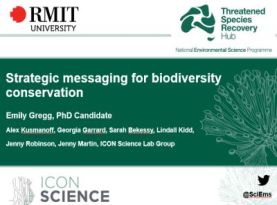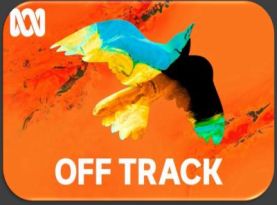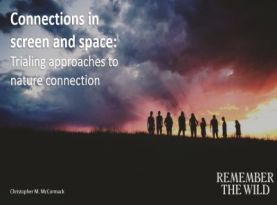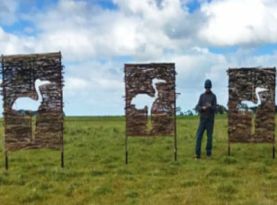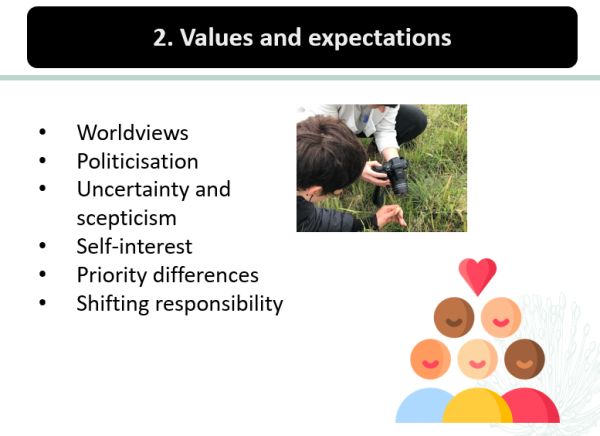SWIFFT video conference 25 October 2018
Communications for conservation
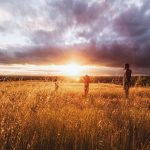
SWIFFT video conference notes are a summary of the video conference and not intended to be a definitive record of presentations made and issues discussed.
This video conference was supported through resources and technology provided by the Department of Environment, Land, Water and Planning, Victoria. SWIFFT wishes to thank speakers for their time and delivery of presentations. Thanks to Michelle Butler who chaired the session from Ballarat.
Key points summary
Strategic messaging for biodiversity conservation - Emily Gregg, PhD Candidate, RMIT University
- Be as specific as possible about your aim and your audience.
- Framing affects the value that people place on threatened species & biodiversity conservation.
- Species names might affect conservation outcomes.
Listening to Nature with Ann Jones - producer ABC Radio National's 'Off Track'
- The program is about ‘place’ and connecting Australians to nature.
- People with interesting stories to tell provide a much better narrative than a press release.
- People who are connected with their environment are much less likely to destroy it.
- Short films can play a role in increasing familiarity with conservation groups and their work.
- The ‘human element’ when connecting people through story really matters.
- Telling positive conservation stories empowers others.
Beeac Brolga Pathways - Peter Day, environmental artist and Karen Cherry.
- Primary school students at Beeac now connect with the life of the Brolgas who live in their own backyard.
- Blending art, science and inquisitiveness, this project has inspired a community.
SPEAKER SUMMARIES
Strategic messaging for biodiversity conservation - Emily Gregg, PhD Candidate, RMIT University
Emily works in a project funded by the Threatened Species Recovery Hub of the National Environmental Science Program. The focus of this project is to increase community buy-in to threatened species conservation, particularly by considering the way in which we talk about threatened species and conservation. The ICON Science Group has a team of researchers working on this project.
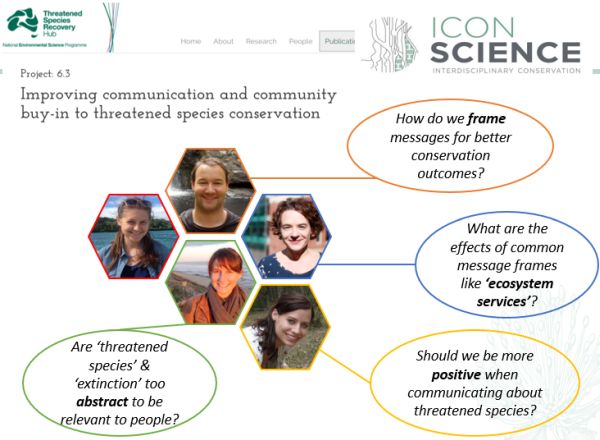
Some of the questions being looked at by the team of researchers working on this project in the ICON Science Group.
Barriers preventing public engagement with threatened species conservation in Australia?
Lack of knowledge and experience (research into how often every animal species listed under the EPBC Act (n=496) was mentioned within public posts on Twitter revealed that 57% of Australia’s listed EPBC Act species had fewer than 20 tweets).
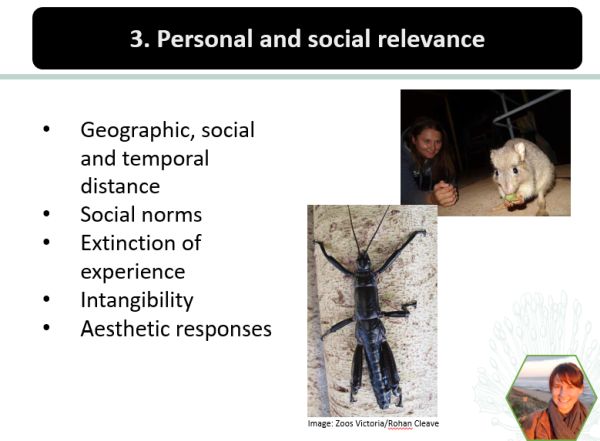
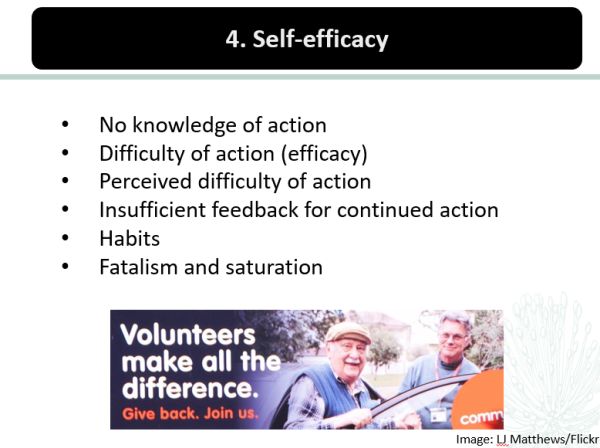
Emily said being aware of all of these different factors is crucial for communication, evidence shows that just providing people with information doesn’t necessarily make them care, make them change their behaviour or make them engage.
Strategic communication theory
Emily spoke about the Situational Theory of Publics, where publics can be identified in terms of how aware and how active they are on an issue;
- awareness (Problem recognition, Level of involvement and Constraint recognition) and
- active in terms of (not aware, aware, latent or active).
These factors are very important for audience selection.
Related research
Emily spoke about research by Lyndall Kidd who has been undertaking a review of studies and their effectiveness in meeting the suggested practice in communication.
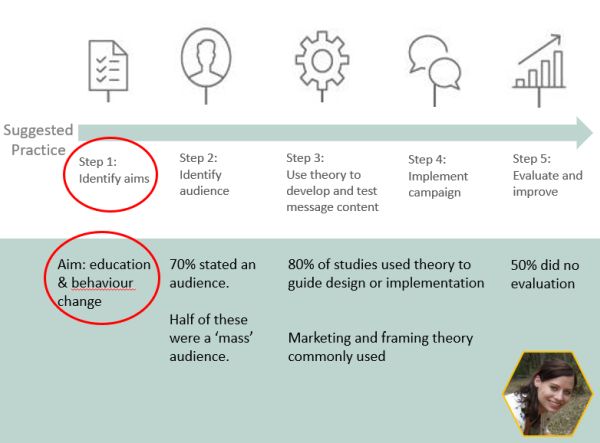
Indications are that many of the aims of these studies were a bit vague – to educate, to create behavior change. Also, whilst 70% of studies stated an audience half of these were a mass audience – not really being very specific, not allowing for any real strategy when it comes to the communication.
Emily stressed that if we want to communicate strategically – we need to be as specific as possible when it comes to our aims and our audience.
Emily spoke about a Message Framing Study conducted by Alex Kusmanoff, part of the ICON project which looked at the importance of identifying the audience.
How do we talk about and label species?
Emily is interested in how we talk about specific species and how the common name could influence the way we relate to species. Emily has been studying species status on the IUCN Red List and how their conservation status relates to their common name. She poses the questions;
- Do we prefer to save species with charismatic names?
- Do we give charismatic names to species we want to save?
- Do charismatic species have charismatic names?
Current and future work
This will include messaging strategies for ‘non-charismatic’ or ‘little known’ species e.g. reptiles, native rodents, invertebrates, plants.
Answering the questions;
- Do common names affect species marketability and conservation success?
- Should we be more positive when communicating about threatened species?
Key points
- Australian threatened species have a low profile.
- Be strategic - be as specific as possible about your aim and your audience.
- The way we say stuff matters - framing affects the value that people place on threatened species & biodiversity conservation.
- Commonly-used communication frames like ‘ecosystem services’ and ‘awe and wonder’ can have varying impact.
- Species names might affect conservation outcomes - consider colloquial names for your species.
Emily acknowledged the ICON Science group and work by Alex Kusmanoff, Georgia Garrard, Sarah Bekessy, Lindall Kidd, Jenny Robinson, Jenny Martin.
Contact: Emily Grigg, twitter @ICON_Science https://iconscience.org/
"Listening to Nature with Ann Jones" - Ann Jones, producer ABC Radio National's 'Off Track' Program
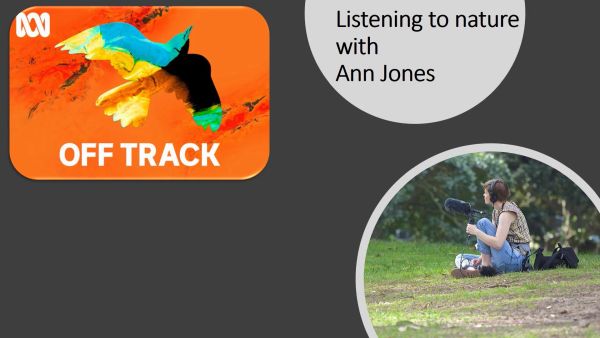
This was a pre-recorded interview by Samantha Strong as Ann was away on assignment.
Ann spoke about her career in radio and her interest in natural history. Being able to combine her love of audio and nature has been extremely rewarding in presenting the Off Track program. Ann discussed how Off Track is a one-person program which allows a great deal of flexibility. Ann felt her role is to be the conduit between the person telling the story and the audience and ensuring the audience feels connected.
Ann spoke about the importance of bringing the sounds of movement to the program (nature sounds and activities). The program is about ‘place’ and connecting Australians to nature. The interviews are conducted separately to allow the emotion of what people are saying to come out.
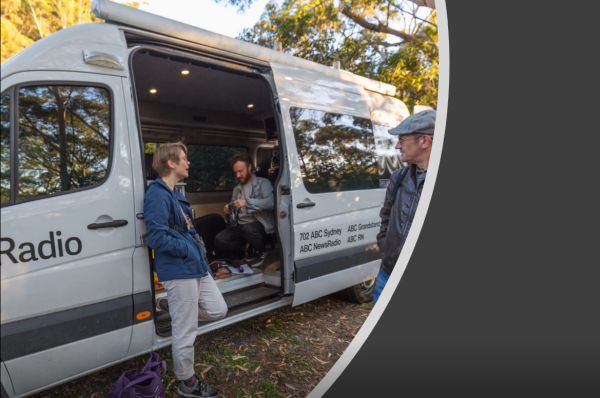
What makes a compelling story?
Ann spoke about the number of e-mails people send in regarding tree planting, Landcare events etc., but unless there is something else to the story it probably won’t be compelling enough. Audiences also tend to turn off at press releases unless there is a story or something to interest people. People with interesting stories to tell provide a much better narrative than a press release.
Social media
Data suggests that most young people don’t go to web sites for information but rather Facebook, YouTube etc. We need to be thinking about how your story might look kike in amongst all the other posts and how is it going to work.
Source of the story
The source of a story can have a significant influence on how it is received. In general, there is little connection with an organisational voice.
Ann spoke about the challenge of connecting with people who are not already engaged. The challenge is breaking through the ‘green wall’ between those already nature minded and those which have no connection to nature.
Key points
- People who are connected with their environment are much less likely to destroy it.
- People are not going to be drawn to something which makes them feel bad.
More details: ABC Radio 'Off Track' with Ann Jones
Connections in screen and space: Trialling approaches to nature connection – Christopher McCormack, Remember the Wild
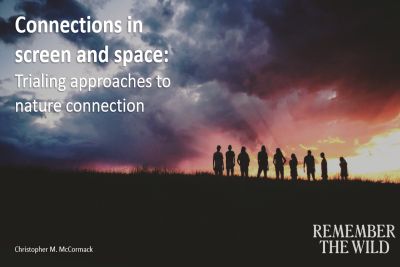
Connecting people with nature is a big part of the mission for Remember the Wild.
Chris provided an overview of benefits associated with being connected to nature, which include a number of health benefits and wellbeing. People with access to nearby nature are healthier and more satisfied with their homes, jobs, and life in general.
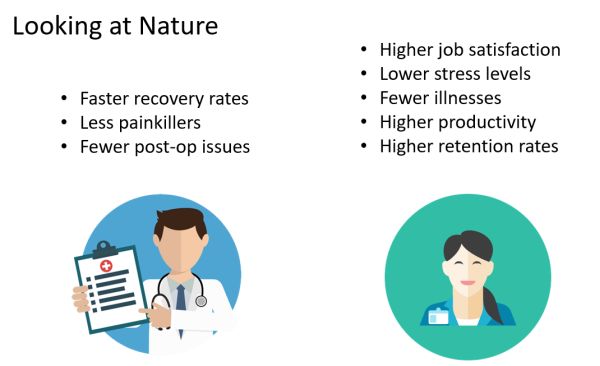
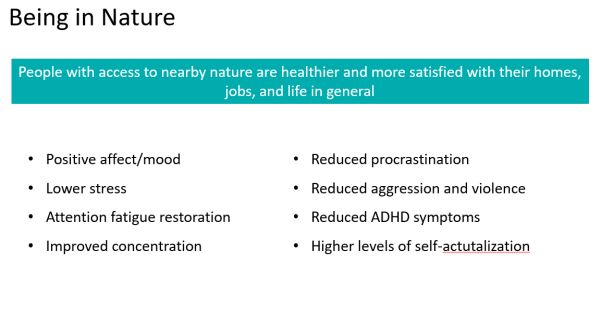 As well as being out in nature Chris spoke about connectedness-to-nature as a psychological trait.
As well as being out in nature Chris spoke about connectedness-to-nature as a psychological trait.
How we identify with nature
Christopher posed the questions; are you completely separate from nature? Is nature alien to you or is there some overlap where parts of life connect with nature? He pointed out the difference between knowing about nature and the feeling of being connected and having an emotional connection to nature. The emotional element is a very important driver or motivator for people.
Trialling different ways of improving the connection with nature
Community Conservationists initiative - the concept is to tell stories about people in the broader community who are doing conservation work. The initiative is based in Victoria at present but it is hoped to be expanded across Australia in the future.
Funding was granted from the Wettenhall Environment Trust to do 5 short films (3-5 min.) celebrating natures everyday heroes.
- WOTCH Eyes on the Forest - based in the Central Highlands, using thermal imaging cameras, to locate Victoria’s faunal emblem - Leadbeater’s Possum.
- Hindmarsh Landcare Network: Building desert biolinks between the Big and Little Desert.
- Friends of Bats and Bushcare. A future for flying foxes.
- Connecting Country around the Bendigo Mount Alexandra area co-ordinating Landcare groups and taking a scientific approach to conservation on private land.
- Friends of Brisbane Ranges – involving students from Wyndham Secondary College in saving Phascogales through building and installing nest boxes.
Remember the Wild - view short films
The short film concept aims to connect people with conservation issues and more generally connect people with the environment by telling stories about people doing the work using them as a conduit to get the message across.
Film screening survey
About 140 people attended a screening after which a survey was conducted looking at their connection to nature before and after the screening (the assumption being that people attending the screening would be already connected to nature). Familiarity with the particular project and issues was also surveyed.
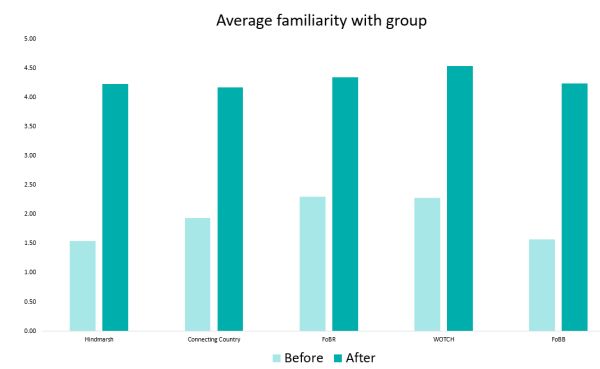
A surprising result was that despite the respondents already having a connection to nature there was a low level of knowledge about the projects even though they are located in Victoria. After the films they felt much more connected.
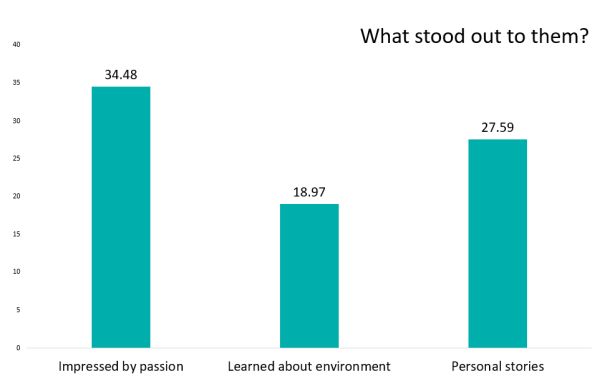
The human element entwined in these stories is very important. By viewing and absorbing the passion of people working in nature people get an idea of what others value and can take on some of those values themselves.
In more general terms there is lack of exposure for conservation groups to share their message to their own peers let alone the broader public. Sharing positive stories can challenge the concept of helplessness or the norm that ‘no one else cares’ so why should I do anything? Sharing positive stories reinforces the message that people do care and the passion that came through in the short films really helped sell the message.
VicRoads – A walk in the wild
The aim of this project was to foster pro-environmental values within VicRoads staff to improve environmentally responsible decision-making. Christopher spoke about Biospheric values which leads to a self-perception as someone who performs pro-environment act. It builds self-imposed norms leading to pro-environmental behavior.
The concept was to get VicRoads participants out in nature to build their Biospheric values.
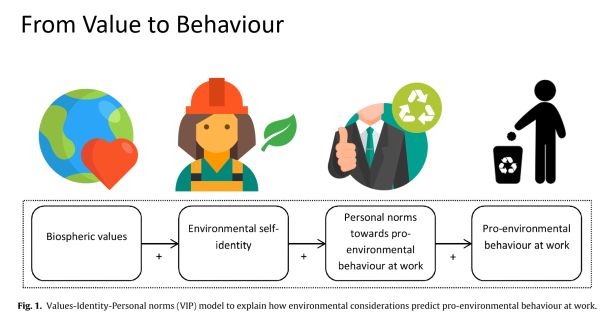
The program was conducted in a natural bushland setting near Warrandyte. Participants discussed the context of the natural bush environment which can be alien to some people but not alien to humans as indigenous people have been connecting with this environment for tens of thousands of years. Participants were given information regarding the ecology of the area and sent out to find their own place in the bush to experience connections.
At the end of the program surveys were undertaken to gauge participants willingness to Sacrifice: an indication of pro-environmental values and behaviour. Questions were also asked relating to their connection to nature.
Christopher pointed out the feedback was very positive as everybody agreed they looked at aspects of the environment differently after the experience.
Take home points
- Short films can play a role in increasing familiarity with conservation groups and their work (even – and importantly – within a peer group).
- The ‘human element’ when connecting people through story really matters.
- Telling positive conservation stories empowers others and combats disillusionment with environmental causes.
- Our (very limited) results suggest that VicRoads participants generally care about their impact on the environment and that NR was correlated with profession.
- Participants all agreed the experience had some impact on their perception of the environment.
- A number cited experiencing restorative feelings while on the walk, and having a greater appreciation of the inter-dependence of living things, afterwards.
More details: Remember the Wild
"Beeac Brolga Pathways with Peter Day, environmental artist" - Karen Cherry and Peter Day
Karen and Peter developed the Beeac Primary School's Brolga Project. One of the first activities of the Brolga Pathways project was involving students in the collection of data on Brolgas in the local area. Peter guided the students in making a collage map of the area depicting the lakes and landscape. He followed up by introducing art via sculptural pieces using natural materials such as bark, grasses and paperbark where students could weave over wire frames of brolgas, creating life size art works. Other art activities included screens of brolgas placed into the landscape as well as brolga crossing road signs placed on local roads.
The sculptural pieces became educational nodes across the district. As more people became aware of the project the community became more engaged, the number of sightings increased momentum for the project grew culminating in a community brolga day. The partnership between the students and staff at Beeac Primary, plus Peter and Inca (Brolga PhD researcher) all came together to make the project a success.
Primary school students at Beeac now connect with the life of the Brolgas who live in their own backyard.
Blending art, science and inquisitiveness, this project has inspired a community with Brolga conservation in mind.
Beeac Brolga Pathways video.
Notes from previous SWIFFT video conferences



